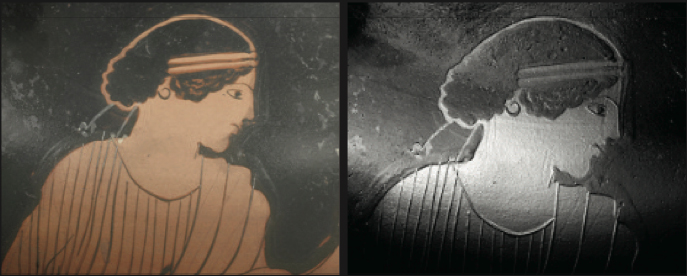The complex and finely painted images on ancient Greek ceramics might appear to us as being effortlessly made, but even the most skilled Athenian vase painters didn’t just wing it.
Underneath the brush strokes are traces of preparatory drawings made by the artisans as they planned out the images they would paint onto the unfired pots.
The fine markings were made with a variety of pointed tools, the preliminary markings range from tiny thin lines, to ovals mapping out the placement of heads and hands, to extensive sketches of whole scenes.
Researchers have been focusing on the production practices of Athenian craftspeople making red-figure ceramics, the pottery that depicts red figures against a black background made between the last quarter of the sixth century and into the fourth century BCE. Research into these preparatory markings allows researchers to explore questions of how many people were involved in producing these objects, and assist in the identification of the individual handiwork of different members of the workgroup that produced these vessels.
Seeing these hidden lines, preserved under the existing paintings, requires examining the surface of the vessels under a 60mm lens and using a computer algorithm. Digital photographs of the vessel’s surface are examined using a computational photographic technique called reflectance transformation imaging (RTI).
This process involves capturing high-resolution digital photographs of one surface up to 100 times under different lighting conditions. These images are then amalgamated using mathematical algorithms to reveal details that are difficult to see in normal light.
This research assists in understanding how individual vase painters worked. For example, a vessel attributed to the Brygos Painter (490-770 BCE) observed using RTI reveals how this individual painter sketched at least three different hand positions of a youth holding a cord. Further examination of objects attributed to the Brygos Painter further reveal that this individual sketched out his images a great deal before the final image was painted.

Although this research is still in its early stages, the data gathered thus far has raised some intriguing questions about ancient Athenian ceramics production. It may now be possible to identify an artist’s “signature style” beyond the painted image.
This information could also lead to an understanding of how many people aside from the potters and painters worked in an ancient workshop, especially if the preparatory drawing and painting styles differed significantly.













